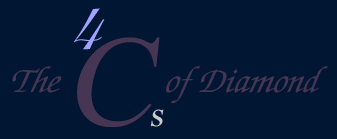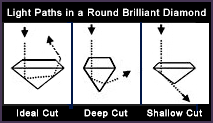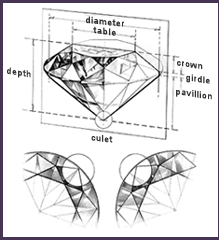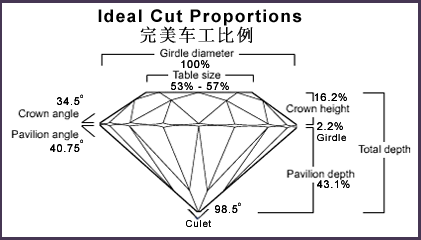![]()
![]()
![]()
![]()
| Home | Our Company | Production Line | Our Core Value | Brilliant Future |
| Diamond Gallery | 4C Guide | Pearl Showcase | Exhibition | Contact Us |


Of the 4Cs, a diamond's clarity and carat weight are dictated by nature, only the cut is the aspect most directly influenced by man. The hand of a master craftsman is needed to release its fire and beauty.
Before
a diamond is cut, our team of top-rank artisans will use their professional judgment
and, together with the help of the computerized laser scanning machines, study
in great details the structure of the rough diamonds. This is to enable
them to decide how best to facet them in order to produce the most brilliant
reflection with the greatest value. After careful observations and
studies, markings are then put onto the stones to determine the paths for
their cleaving or sawing. There
 are
usually three ways to cut them:
are
usually three ways to cut them:
- normal cut;
- laser cut (for rounds and sawables of different shapes);
and
- cleaving.
The whole process does not only require the most delicate craftsmanship, but also demands very sharp judgment. Extreme care has also to be displayed since any mishaps may reduce the inherent values of the roughs.
The next step is bruting, during which a round girdle will be shaped. The roughs will then be delicately faceted and polished with a view to achieving the maximum luster and brilliance from the gemstones.
The cut gives each diamond its unique sparkle and brilliance by allowing the maximum amount of light to enter and reflect back out of the diamond.


¡@
A diamond's size is measured in carat weight. Each diamond carat is also equal to 100 points. When diamonds are mined, large gems are discovered much less frequently than small ones, which makes large diamonds much more valuable.

¡@
Clarity is an indication of a diamond's purity. When a rough stone is extracted from carbon, deep beneath the earth, tiny traces of natural elements are almost always trapped inside. These elements are called inclusions, though sometimes referred to as birthmarks, because they are formed naturally and are unique to each stone. A diamond with less inclusion is better able to reflect light.

¡@
Diamond colors appear in a range from colorless to light yellow. Color grades D, E and F are considered colorless. As a rule, the closer a diamond is to colorless, the more valuable and beautiful it is.
